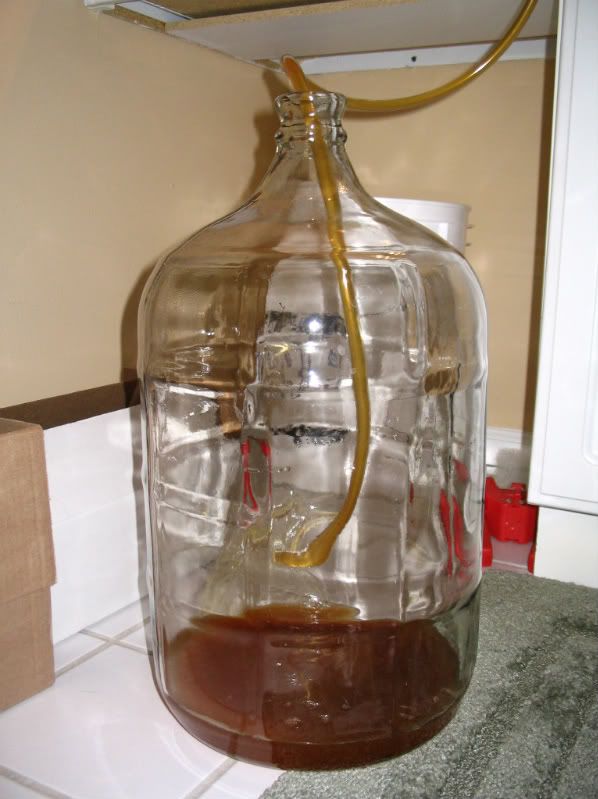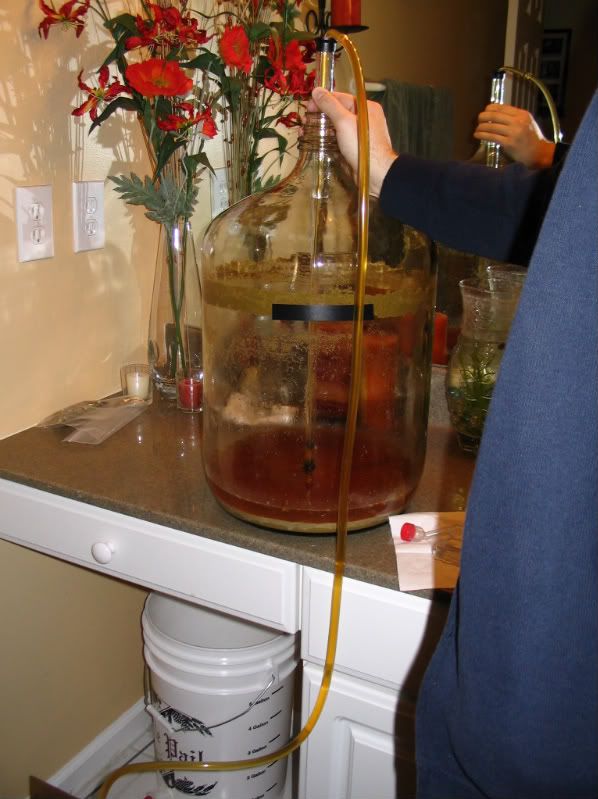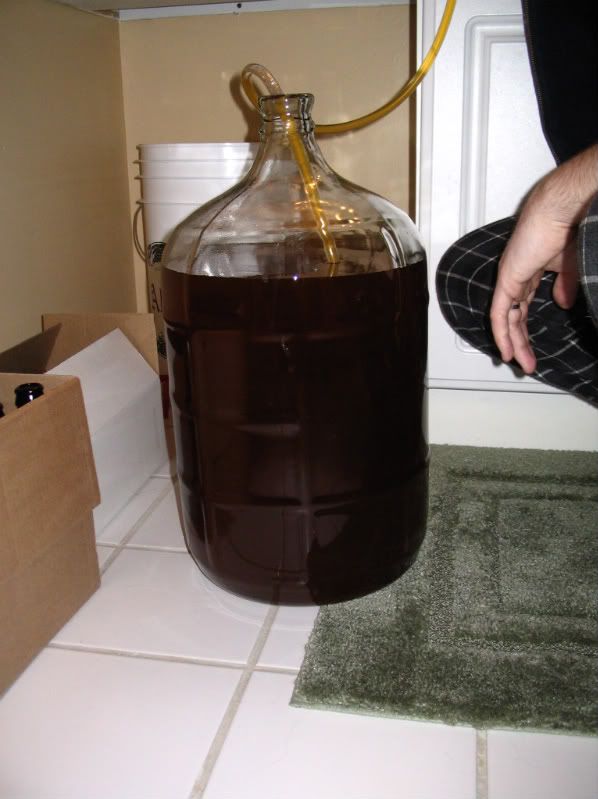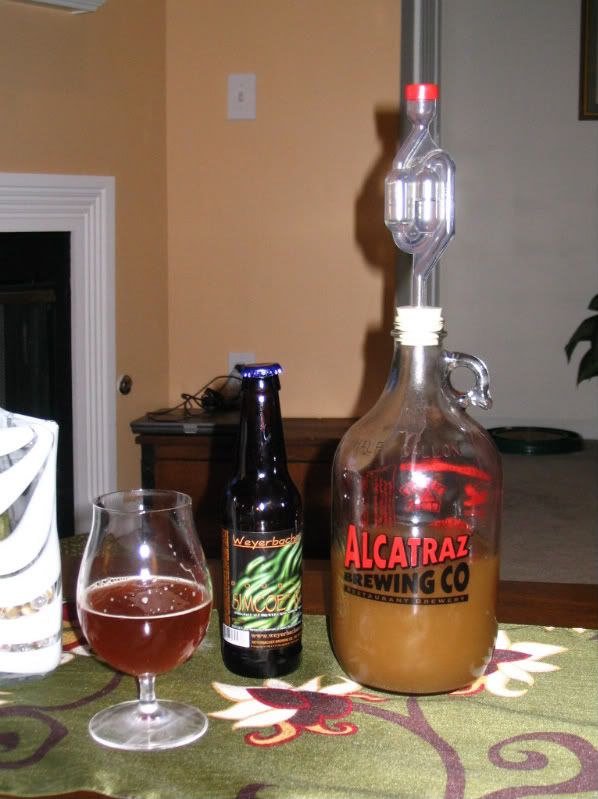There were two main things I did last night. The first step was racking the IPA from the primary fermenter (6.5 gallon carboy) to the secondary fermenter (5 gallon carboy). Racking is a process of siphoning beer (or wine) out of one tank into another tank, leaving the sediment, called trub, behind. This does two things. First, it takes the beer off the inactive yeast at the bottom of the carboy. The longer you ferment, the less fermentable sugar is available and the more yeast becomes inactive and settles to the bottom of the tank. Eventually, the yeast can start to break down and can create off flavors in your beer.
Secondly, racking helps improve the clarity of your beer as you leave behind the trub that had settled in the primary fermenter. I plan to let the IPA ferment for about another week in the secondary, letting the remaining yeast work on whatever sugars are still available and allowing some more time for particles and junk to settle out of the beer. Here are a couple pictures of the racking process:

 Note the white-ish layer of trub at the bottom of the carboy.
Note the white-ish layer of trub at the bottom of the carboy.
 Leaving a little space for the second beer.
Leaving a little space for the second beer.
The second thing I did last night was create a starter for my high gravity beer (the style is a secret for now). A starter is basically a mini wort with a small portion of the malt to be used in your recipe. The idea is to get the yeast you're going to use in the main fermentation used to the sugar you're going to use while also building up the population of yeast cells. Initial yeast populations are usually well below the levels that will be active at the peak fermentation point. Using a starter basically kick-starts the fermentation when you add it to the full wort.
In addition, high gravity beers have a much higher initial concentration of sugar than regular beer (this results in much higher alcohol content). Putting inactive yeast directly into a high gravity wort can apparently "shock" yeast cells and even kill them (the science behind this is a bit of a mystery to me, so I apologize that I can't expand on this). Here's a picture of our little starter, prepared in an Alcatraz growler:
 I should have some more pictures later this week of homebrew Batch 3.
I should have some more pictures later this week of homebrew Batch 3.



4 comments:
Oh! Oh! I know what it is! Pick me!
No fair!
I'll post this in a beer related post instead of a city development related post:
We're going to Deano's for the HBG St. Patrick's Day thing on Saturday evening. Were you guys planning on going as well or would you like to join us? We're also going to do BadaBoomz on Monday since they'll have Ommegang Stout and Schlafly Irish Stout on tap if you're interested in that as well.
I was going to ask you guys about going to BadaBoomz on Monday! We'll definitely be there for that.
I'll be at the HBG party early on Saturday, probably getting there right when it starts (6pm) and eating dinner there. I'll be heading up to the Rathskeller later in the night.
Post a Comment